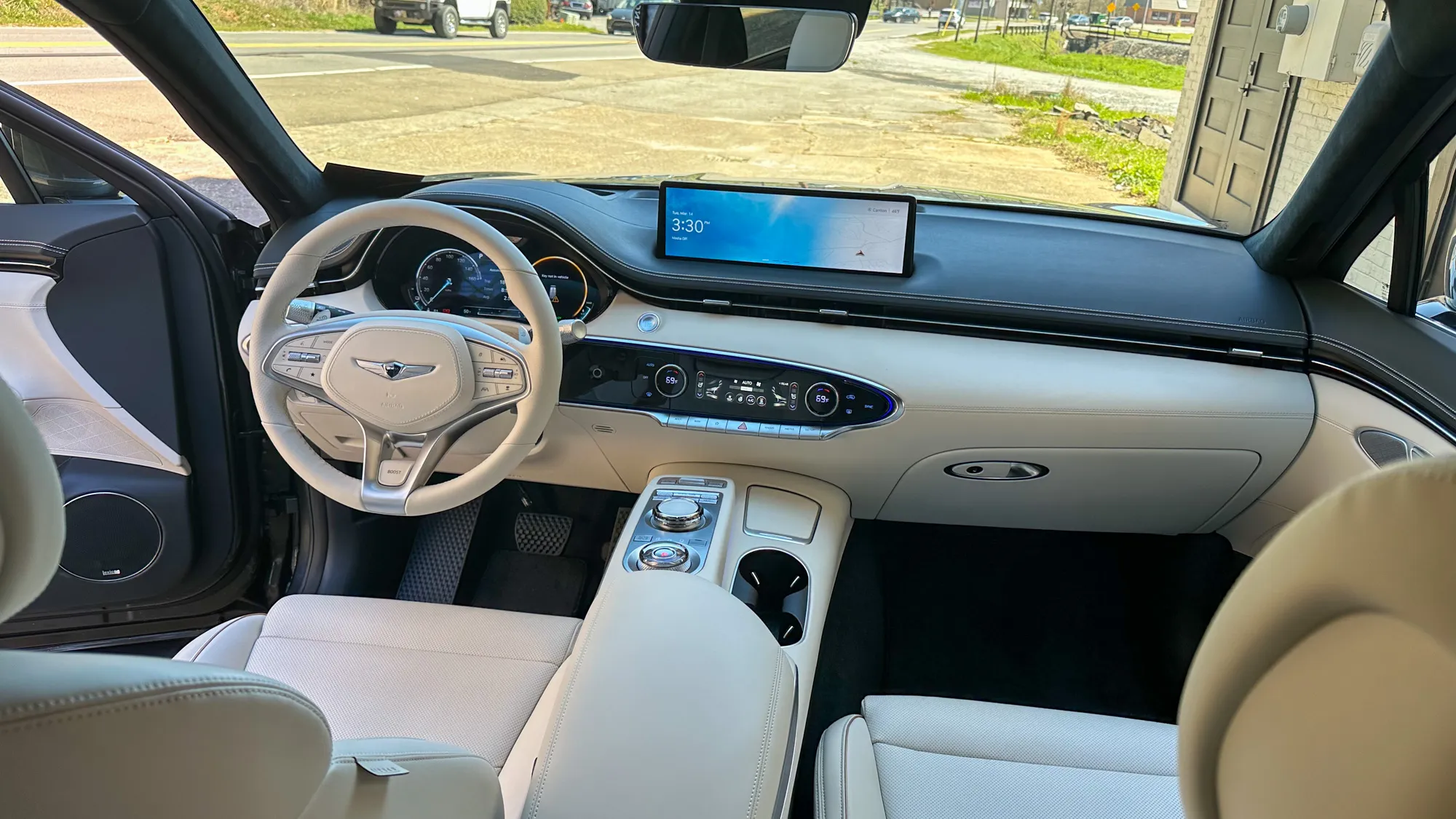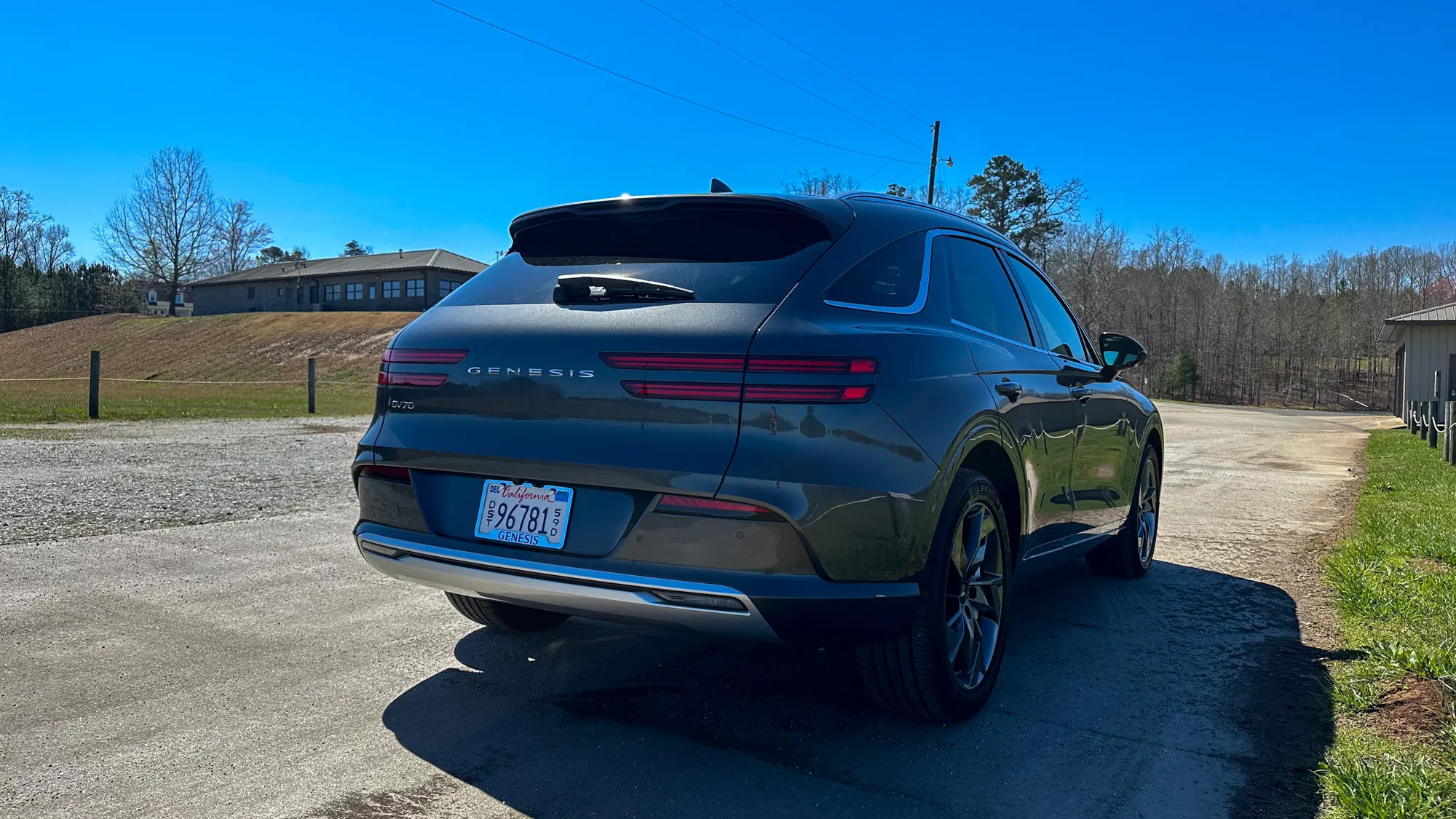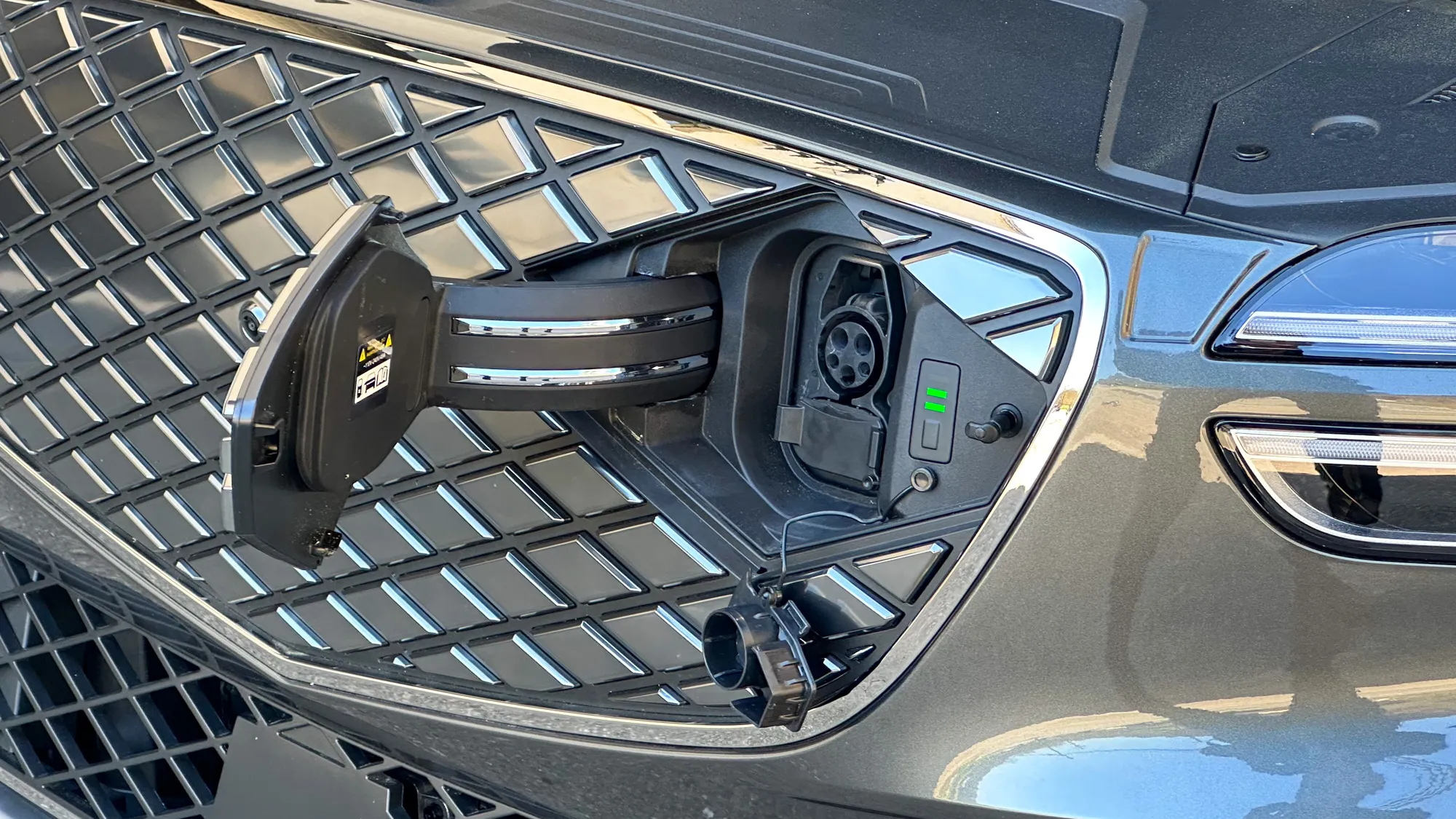Hyundai Motor Group has undergone a complete renaissance. Led by the likes of the Hyundai Ioniq 5 and the Kia EV6, the company has successfully reinvented itself as a world leader in the EV market, setting itself up for the future in a pretty serious way.
But Kia and Hyundai are joined by a third brand. Genesis is less-known than its sister companies, but like its parent, it’s facing explosive growth. Genesis was conceived as a luxury brand of Hyundai Motor Group — and as such, you might expect its EVs to take the best things about the EV6 and Ioniq 5, and then inject them with a little more luxury.
For the most part, the new Genesis Electrified GV70 does that. It offers features very reminiscent of the EV6 and Ioniq 5, but with an arguably more comfortable interior, premium paint and materials, and more.
But considering how well-loved those other cars have been, the Electrified GV70 is also missing a few things. Namely, range.
Sleek exterior, comfortable interior
I quite like the overall design of the Electrified GV70. As the name suggests, the car is essentially an electric variant of the standard GV70, and in this case that’s a good thing.
The car still offers the dual-line headlight and taillights that have become Genesis staples. It still has the larger front grille-looking thing that isn’t a traditional grille, but Genesis says still helps with aerodynamics. And, it has the same curved side profile that gives it a sporty look. One nice touch is the fact that the charging door is on the car is at the front, making it very easy to reach charging cables.

Step inside the car and you’re greeted by more similarities, though not everything about the interior is the same. The model I tested had a stitched soft-touch leather, with plenty of adjustments to make for a comfortable ride. That’s coupled with plenty of nice leather and premium plastic throughout the cabin. I don’t love the matte chrome look used in some of the materials — I feel it looks slightly cheap — but it certainly didn’t look bad.
There are a few things that I didn’t love about the Electrified GV70’s look. Genesis has become known for its stylish color options, both inside and out — but this car will only be available in a few different shades of gray on the outside, and either a light or dark leather interior. You won’t get the deep red leather look you can find on some of the other models, nor will you get the sleek green and blue exterior options. It’s unclear why this is the case. It seems like it may have to do with the fact that the car is the first to be manufactured in the U.S. (for North American customers; other regions will still get South Korean-manufactured cars), and the factory in Georgia may not be equipped to handle those paints and materials. That’s just speculation, though.
Hello range anxiety
The excellent look and feel of the car continued while driving it, too. I found the Electrified GV70 to offer an extremely smooth ride, with responsive steering and braking. The car was quiet, acceleration was quick, and it generally reminded me a lot of driving the other Hyundai Motor Group EVs.
One detail that’s sure to make for a fun time is the “Boost” button in the steering wheel. This button applies more power to the wheels for 10 seconds, which can come in handy for quick overtaking and other maneuvers that require a little more juice.

The Electrified GV70 has a bit of an issue in its electrification, though — the range is pretty lackluster. The car offers a maximum range of 236 miles, which is lower than even the base models of the EV6 and Ioniq 5, and way below the likes of Tesla, Rivian, and others.
That’s an issue. Genesis is still riding high on an influx of new drivers, considering the fact that the brand is relatively new. And given where we are in the journey of electrification, buyers will likely be getting their first EV, too. I’ve generally found that range anxiety depletes a little over time, as drivers get used to charging and get into a routine. But a lower range may not be quite enough to get the car over that hump.
I get it — this car was not built from the ground up to be an EV. Instead, this car rides on the same platform as the standard GV70, and that introduces some restrictions in things like battery capacity. Hopefully, Genesis will start building EVs from scratch, and when it does, it will be in an improved position to offer bigger batteries with better range. Really, most companies should be shooting for at least 300 miles of range in 2023.

Thankfully, the car does inherit the fast charging speeds from the Ioniq 5 and EV6. With an 800-volt architecture, it’s able to charge at up to 350 kilowatts, assuming you can find a charging station that supports that speed. So, when you are running out of juice, you can top it off quick.
Other details help cement this as a tech-forward car. It has the same camera-based blind spot monitoring as other modern Hyundai Motor Group cars, and that’s a feature I love. It also offers a lane assistant and adaptive cruise control, so it can mostly drive itself on the highway, as long as you keep your hands on the wheel.
A promising start
The only major thing I don’t like about the Genesis Electrified GV70 is the lower range. Everything else about it, from the slick design to the comfortable interior, is a win. Genesis is building itself up as an EV-first company, and it’s set up to be a force in the market.

But range matters. The Lucid Air is able to deliver more than 500 miles of range, and while I don’t expect every car to be on the cutting edge in that respect, I do expect luxury EVs to offer more than half of that, not less.
Still, it’s hard to ignore how great the Electrified GV70 is in pretty much every other respect — and I’m excited to see how Genesis builds on this foundation over the next few years.




